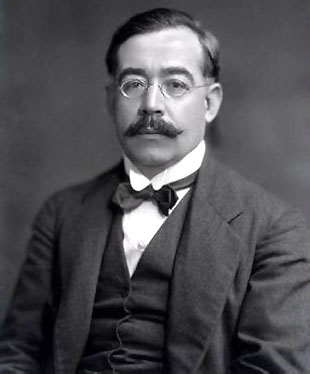
Leopoldo Antonio Lugones Argüello was an Argentine poet, essayist, novelist, playwright, historian, professor, translator, biographer, philologist, theologian, diplomat, politician and journalist. His poetic writings are often considered to be the founding works of Spanish-language modern poetry. His short stories made him a crucial precursor and also a pioneer of both the fantastic and science fiction literature in Argentina.

Mecha Ortiz was a classic Argentine actress who appeared in films between 1937 and 1981, during the Golden Age of Argentine Cinema. At the 1944 Argentine Film Critics Association Awards, Ortiz won the Silver Condor Award for Best Actress for her performance in Safo, historia de una pasión (1943), and won it again in 1946 for her performance in El canto del cisne (1945). She was known as the Argentine Greta Garbo and for playing mysterious characters, who suffered by past misfortunes in love, mental disorders, or forbidden love. Safo, historia de una pasión was the first erotic Argentine film, though there was no nudity. She also played in the first film in which a woman struck a man and the first film with a lesbian romance. In 1981, she was awarded the Grand Prize for actresses from the National Endowment for the Arts.
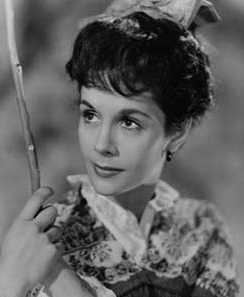
Delia Amadora García Gerboles better known as Delia Garcés was an Argentine film actress of the Golden Age of Argentine Cinema (1940–1960). She made almost 30 appearances in film between 1937 and 1959 and acted on stage from 1936 to 1966. She won the Premios Sur Best Actress award three times from the Argentine Academy of Cinematography Arts and Sciences, as well as the Argentine Film Critics Association's Silver Condor Award for Best Actress, the Premios Leopold Torre Nilsson, Premio Pablo Podestá, and the inaugural ACE Platinum Lifetime Achievement Award from the Asociación de Cronistas del Espectáculo.

Laura Ana "Tita" Merello was an Argentine film actress, tango dancer and singer of the Golden Age of Argentine Cinema (1940–1960). In her six decades in Argentine entertainment, at the time of her death, she had filmed over thirty movies, premiered twenty plays, had nine television appearances, completed three radio series and had had countless appearances in print media. She was one of the singers who emerged in the 1920s along with Azucena Maizani, Libertad Lamarque, Ada Falcón, and Rosita Quiroga, who created the female voices of tango. She was primarily remembered for the songs "Se dice de mí" and "La milonga y yo".

Alita Blanca Barchigia, better known as Alita Román, was an Argentine film actress of the Golden Age of Argentine Cinema (1940–1960).
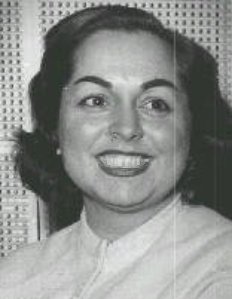
Nélida Dodó López Valverde known professionally as Nelly Beltrán was an Argentine actress. She appeared on the radio from the age of 10 and in 85 theatrical performances, 48 films and 3 dozen television shows between 1953 and 1996. She won a Martín Fierro Award as Best Comic Actress for her television work on La hermana San Sulpicio; participated in the film Pajarito Gómez which won the Best Youth Film award at the 15th Berlin International Film Festival; won a Konex Foundation Award; and was honored by the Argentina Actors Association in 2004 for her career contributions.
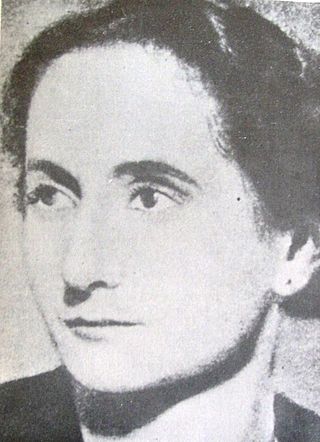
María Rosa Lida de Malkiel, born Maria Rosa Lida, was an Argentine philologist. Notable as an Hispanist medievalist, she came to the United States on a Rockefeller Foundation program of study. Beginning in 1947, Lida de Malkiel lectured for many years in the US, including at Harvard University, the University of California at Berkeley, and Stanford. An advisor to the editorial boards of two professional journals, in the 1950s she was admitted to the Real Academia Española and the Academia Argentina de Letras.
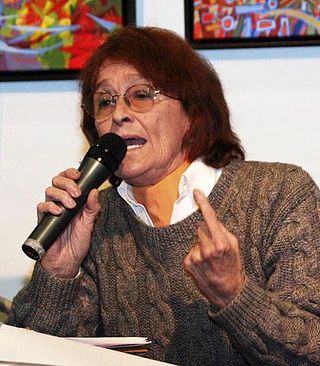
Alcira Susana Argumedo was an Argentine sociologist, academic and was member of the Argentine Chamber of Deputies. She was nominated as a candidate for president on the Proyecto Sur ticket for the 2011 general elections.

Petrona Eyle was an Argentine physician and feminist who campaigned for Latin American women's rights. She studied medicine at the University of Zurich, where she wrote her thesis on ear deformities, and in 1893 became the second woman to practice medicine in Argentina after Cecilia Grierson.
Alicia Girón González is the past president of the International Association for Feminist Economics (IAFFE), her tenure was 2014 to 2015. Girón has also served as director of Universidad Nacional Autónoma de México's (UNAM) Economic Research Institute (IIEc).

Julia Tuñón Pablos is a Mexican historian and author. In 1987, she wrote the first comprehensive historical account of women's contributions to building the nation, as prior histories had predominantly left women out of the narrative. In 1983 and again in 2000 she was awarded the Gabino Barreda Medal for academic excellence She won the Susana San Juan Literary Prize in 1998 and was awarded the Emilio García Riera Medal by the University of Guadalajara in 2004.
Preguntarnos por la participación femenina en la historia de México, implica la conciencia de múltiples desconocimientos.

Gloria Guzmán (1902–1979) was a Spanish-born Argentine vedette and actress who performed in the early Argentine theater.

Elina González Acha de Correa Morales was an Argentine educator, scientist and women's rights activist. In her early days, she was among the first graduates of the Argentine Normal School and was a painter, winning international recognition for both her textbooks and paintings. She was the driving force behind the founding of the Geographical Society of Argentina and served as its president from its establishment until her death. She and her husband, Argentina's first renowned sculptor, Lucio Correa Morales were defenders of the land claims of the Ona indigenous people.

Pilar Calveiro is an Argentine political scientist, a doctor of political science residing in Mexico. She was exiled to that country after having been kidnapped at the Navy Petty-Officers School of Mechanics (ESMA) during the military dictatorship of the 1970s. In her writing she has made important contributions to the analysis of biopower and political violence, as well as recent history and the memory of Argentine repression. Her work has been published in Mexico, Argentina, and France, and she is currently a research professor at the Benemérita Universidad Autónoma de Puebla. Her publications include Poder y desaparición, los campos de concentración en Argentina and Desapariciones, memoria y desmemoria de los campos de desaparición argentinos.
Lidia Ángela "Lili" Massaferro was an Argentine actress and Montonero militant.

Mirta Zaida Lobato is an Argentine historian, essayist, and full professor specializing in the social, cultural and political history of the world of work and gender relations in Argentina and Latin America in the 20th century. Lobato was the founder of "Área Interdisciplinaria de Estudios de la Mujer" (AIEM). She was awarded a Guggenheim Fellowship in 2006.

Vlasta Giulia Lah Rocchi, known professionally as Vlasta Lah, was the first woman director of sound films in Argentine cinema, as well as the only woman filmmaker in Latin America in the 1960s. Before her, the only women filmmakers in the country worked during the silent era in the 1910s and early 1920s, before the industrial development of Argentine cinema.
Nora Domínguez is a full professor of literary theory at the University of Buenos Aires. She was a co-founder of the Instituto Interdisciplinario de Estudios de Género at the University of Buenos Aires, which introduced gender studies as an academic field in 1992. Between 2010 and 2017, she was the director of the institute. Her book De dónde vienen los niños. Maternidad y escritura en la cultura argentina won the Essay Prize from the National Arts Foundation. In 2021, she published El revés del rostro. Figuras de la exterioridad en la cultura argentina, which won the Humanities Prize for the Southern Cone from the Latin American Studies Association in 2022. She is currently directing a six-volume work to compile the series Historia feminista de la literatura argentina. The first volume in the series was released in 2020.
Hilda Habichayn was an Argentine sociologist and feminist. She founded the Centro de Estudios Históricos sobre las Mujeres at the National University of Rosario in 1989 and an academic journal Zona Franca in 1992. The center, later renamed as Centro de Estudios Interdisciplinario sobre las Mujeres offered the first post-graduate degree in women's studies in Latin America from 1993. She served as director of the center and journal until her retirement in 2007.

Sylvia Bermann was an Argentine psychiatrist, public health specialist, essayist, and member of the guerrilla group Montoneros. She spent several years in Mexico before returning to Argentina to practice her profession and manage the clinic that her father, Gregorio Bermann, had established.
















